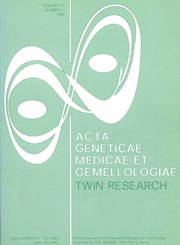Article contents
Influence of ionizing radiations on the development of the nervous system
Published online by Cambridge University Press: 01 August 2014
Summary
The first cellular differentiation in the process of segmentation leads to the embryonic period, the major organogenetic period for the nervous system. In man, it appears between the second and the eighth week after conception.
During the foetal and perinatal periods, the nervous organization mainly develops at the cerebellum and cerebral cortex levels. The cerebrum functional maturation continues well beyond birth.
Neuroblasts are the most widespread mother-cells in the developing nervous system during the embryonic period, but some are still to be found after birth.
Animal experiment has demonstrated that ionizing radiations were able to disorganize neurogenesis in any of its maturation stages, even at very low doses. It is possible to establish a chronological table showing the anatomical or functional deformities in relation with the embryonic age at which rays have been given.
It appears that in man the most dangerous period is between the beginning of the second and the end of the eighth week after conception. At that moment, pregnancy is often ignored and a dose of 20 to 40 r is sufficient to entail serious damages, such as microcephaly, protrusions of the brain or mental retardation. On drawing near to birth the foetal or neonatal nervous system of rodents or primates is still radiosensitive, especially at the cerebral cortex level and the consequences will be of a neurophysiologic or psychosensorial nature. Certain embryopathies or neurologic alterations would only be apparent in subsequent generations, following mutations induced into the mother-cells of the nervous system. Genetic deformities of the nervous system can also result from moderate irradiations of the gonads.
Further to the precise experimental research work on the radiovulnerability of the embryonic or foetal nervous system of the animal, certain clinical observations are presented, which lead to similar conclusions.
The atomic bombardments have caused numerous neurological trouble among the children who had been irradiated in utero. And the genetic effects are not yet perfectly known to-date.
This set of experimental and clinical data must prompt us to be very careful when using ionizing radiations, even at low doses, in pregnant women and newborn.
- Type
- Research Article
- Information
- Acta geneticae medicae et gemellologiae: twin research , Volume 16 , Issue 3 , July 1967 , pp. 275 - 309
- Copyright
- Copyright © The International Society for Twin Studies 1967
References
Bibliographie
- 3
- Cited by


